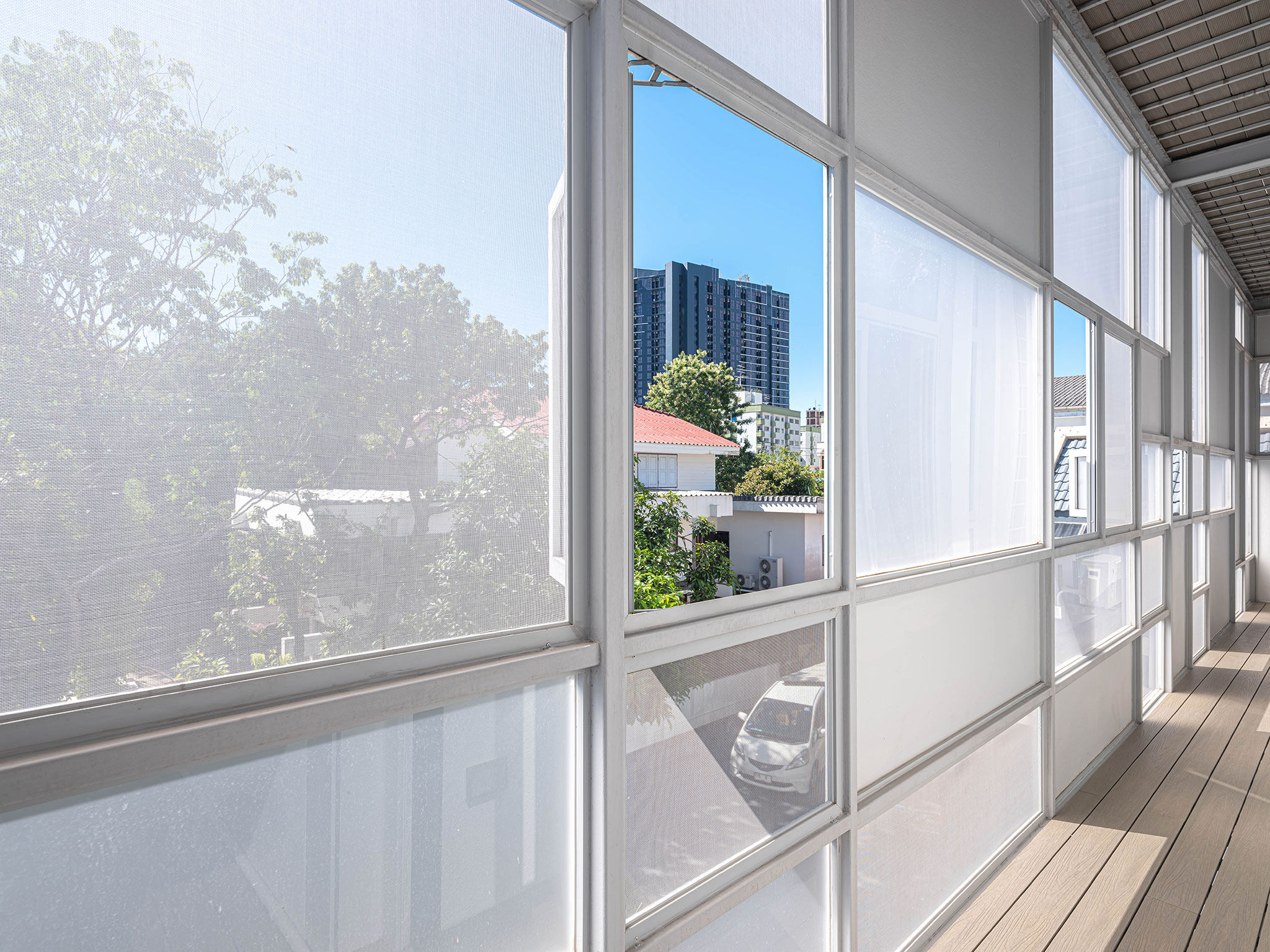Thanks to the play of opaque, transparent and translucent materials, the facades act as curtains and mosquito nets of typical Thai houses, providing natural lighting to the interior of the home during the day and illuminating the home at night. Allowing natural ventilation to flow, the facades open and close according to the needs of residents while protecting the building from rain and sunlight.

LP 115 by Junsekino Architect and Design. Photograph by Spaceshift Studio.
Project description by Junsekino Architect and Design
The design of LP 115 house started with the need of a small family for a new house on the same plot of land as their original house, so there was a limitation on construction space. The designer decided to utilize the space of the existing swimming pool structure, and cover it with a new steel structure of the house, which is lightweight and easy for the construction process. In addition to saving construction space, it also saves on the cost of filling in or demolishing the original swimming pool.
In order to have enough space for living, the house is designed as a 3-story building with the first floor elevated above the ground for the main living area, and the basement which was originally the swimming pool is transformed into an entertainment room, while the second and third floors are private areas for each member of the family. And because of the height of the building, the facades receive an amount of sunlight which may cause problems with heat. Therefore, the entire functional areas are placed inside, surrounded with corridors for future maintenance, as well as for reducing heat from living spaces.

LP 115 by Junsekino Architect and Design. Photograph by Spaceshift Studio.
The facades are divided into smaller portions to dissolve the building’s scale, only 3 design languages are applied to the facade: opaque, transparent, and translucent. Therefore, the facades can be open and closed as to the resident’s needs, they are able to protect the building from rain and sunlight, while also allowing natural ventilation to flow through. The facades, therefore, act like both curtains and insect screens of typical Thai houses. The interior of the house receives natural light during the day, and at night the building is lit from the inside out. The house is the architecture that changes color according to the color of natural light at different times of the day.






















































